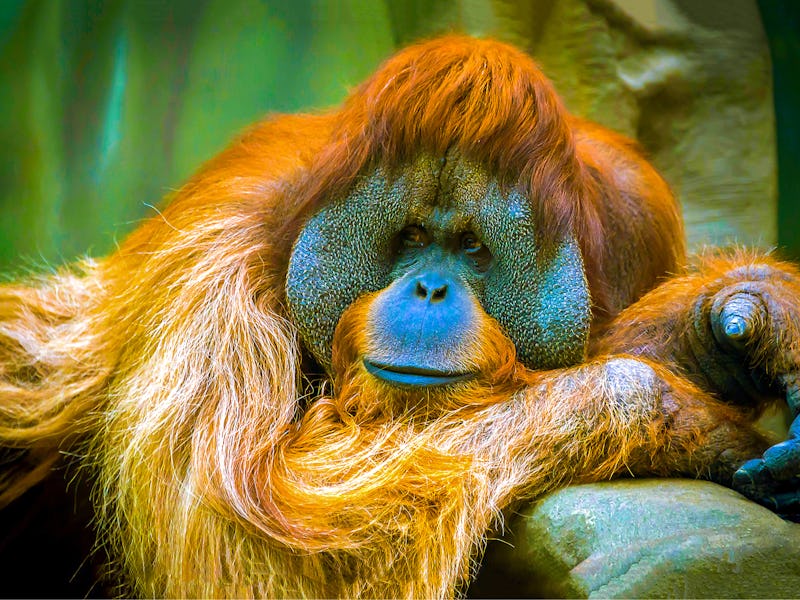'Scientific Serendipity' Leads to Discovery of Mysterious Orangutan Species
"This is something you cannot expect and guess."

Among the smoldering volcanoes and verdant rainforests making up the islands of the south Pacific, wild orangutans skitter among treetops laden with fruit. For a long time, scientists believed were only two species, which they named for the islands they called home: the smaller, orange-haired Sumatran orangutan and its larger cousin, the shaggy red-haired Bornean orangutan.
But in 2013, anthropologist Michael Krützen, Ph.D. went to the northern tip of Sumatra and came across a weird skull that changed everything.
In a paper published in the journal Current Biology on Thursday, a team of researchers led by Krützen, a professor of anthropology and genomics at the University of Zurich, report that the skull provided concrete evidence of a third, unknown species they now call Pongo tapanuliesis, after the Tapanuli region in which the skull was first found. The newly recognized group is the first new great ape species discovered in over 80 years. Krützen tells Inverse that, even after over ten years of research on orangutans, he didn’t see this discovery coming.
“It was a moment of scientific serendipity when a few of us realised that our data were actually strong enough to support a new great ape species,” he says in an e-mail. “This is something you cannot expect and guess.”
Scientists from Australia National University had noticed the unusual, isolated population of orangutans in the Batang Toru region of Sumatra in 1997, but there was no indication then that the primates represented a whole new species — they just seemed a bit strange. Krützen explains that this population had actually been mentioned by researchers once before, way back in 1930, but scientists had always assumed that they were just odd Sumatran orangutans.
Things started to change after the discovery of the Batang Toru skull in 2013, which led Krützen and his team to realize the population was “somewhat interesting.” They noticed that in the Batang Toru orangutans, the skull and teeth are different than those of the other species, their hair is frizzier, and their “loud calls,” which males use to attract females and ward off enemies, sound different too.
But determining whether they constituted a brand-new species required looking at the actual genomes of these animals. In the new study, which analyzed the genome sequences of 37 individuals of the new species, they found the roots of those morphological differences, written in the animals’ DNA.
The Batang Toru population, Krützen confirms, is “an independent lineage and that there has no genetic exchange between then and other orang-utans for at least 10-20,000 years.”
The evolution of a new species is easy to understand when populations are geographically isolated, as the original Sumatran and Bornean orangutan populations were. As for what caused a second species to evolve alongside its Sumatran cousins, however, is still a mystery, says Krützen. “[We] don’t know. The Toba volcano to the north of it might have played a role, but from our genomic data it seems that the Batang Toru population became more isolated 100,000 years ago until there was no genetic exchange anymore 10-20,000 years ago.”
Despite being recognized as a new species, however, the Tapanuli population isn’t immune to the label put on all members of the orangutan family: critically endangered. An unrelated survey, carried out independently by Indonesian and international scientists, suggests that the newly rebranded orangutans (once thought to be part of the larger Sumatran group, which have been on the critically endangered list since 2008), are actually the most endangered of them all, with only 800 individuals left.